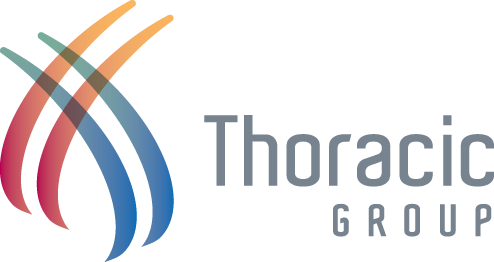Frequently Asked Questions
The surgeon at Thoracic Group, Dr. Jean-Philippe Bocage, is a pioneer of video assisted thoracic surgery (VATS), a minimally invasive procedure designed to reduce incision size and promote a shorter recovery time as an alternative to open thoracotomy. Using VATS, our award-winning surgeons treat such conditions as lung cancer, palmar hyperhidrosis and myasthenia gravis.
VATS has revolutionized the way thoracic surgery is now performed and is the most significant advance in thoracic surgery over the past 50 years.
To help you research and prepare for your VATS procedure, we have compiled a list of commonly asked questions. Please click on a question below to display the answer.
Q: How long have you been performing this procedure?
A: Your health is in good hands: our team has nearly two decades of experience. We have performed over 7,000 VATS procedures since 1991 – from simple lung resections, to more complicated procedures like removing a portion of the lung (lobectomy, segmentectomy) or the entire lung (pneumonectomy). We have also treated pleural disease and mediastinal abnormalities. In fact, because VATS provides endoscopic access to the chest cavity, our experience allows us to perform virtually any procedure in the thoracic cavity involving the lung, mediastinum, and pleura, without traumatizing the chest wall.
Q: Does anyone else perform VATS?
A: VATS is a procedure that is becoming increasingly popular as less invasive procedures, and they are shown to be more beneficial and patient demand grows. There are more thoracic surgery training programs adding VATS techniques to their repertoire, though typically we’re still seeing more complex procedures such as lobectomy, pneumonectomy, or mediastinal resections still being managed with traditional thorocatomy in most cases. We feel we offer an advantage over other programs based on the depth and breadth of our experience with VATS procedures of all types.
Q: Why didn’t my doctor tell me about this VATS approach?
A: Some physicians may not be aware of the advances being made in endoscopic thoracic surgery. It is a priority for us to help increase physician awareness on the advantages of VATS through patient and physician education.
Q: Why doesn’t every thoracic surgeon perform VATS procedures?
A: VATS requires specific training in endoscopic procedures, and not every thoracic surgeon has this training. When you consult with a thoracic surgeon, ask how many procedures they regularly perform. If you are discussing a VATS approach, ask how often the VATS procedures are converted to the open thoracotomy approach to finish the complex procedures.
Q: How long will this procedure take?
A: Every procedure is different, and the length will vary based on the specific procedure as well as the individual. Our years of experience has enabled us to dramatically improve our efficiency and reduce time spent in the operating room which yields significant benefits to the patient including reduced or eliminated hypothermia, less blood loss, and reduced side effects of anesthetic agents (nausea, vomiting, lingering sedative effects). In general, almost all of our VATS procedures are performed in less than one hour.
Q: How long will I be in the hospital?
A: One of the many benefits of VATS is a shorter hospital stay and a faster recovery. Over the past 6,000 cases, more than 95% of our patients go home from the hospital 1-2 days after surgery.
Q: How will the operation affect my breathing?
A: In most patients, a VATS lung resection will have minimal impact on their respiratory breathing. Patients with severe lung disease such as emphysema, compromised lung function, or breathing difficulties are assessed with preoperative pulmonary function tests, but many have been treated successfully. One of the many advantages of VATS is the reduced injury to the chest wall muscles used in respiration. Some of our patients have returned to physically challenging activities such as cycling and marathon running following a VATS lobectomy.
Q: Will my lung collapse?
A: Yes – but it’s intentional. We stop pumping air into the lung to allow the lung to be in a resting state during a VATS procedure in order to provide complete visualization of the intrathoracic cavity, and ensure success. The double-lumen tube is used to control the airway and separate the two lungs by not allowing air into the lung that is being operated on. Once the procedure is complete, the air is allowed re-enter the lung, allowing it to naturally re-expand. Upon completion of surgery, a chest tube is inserted to facilitate a return to the natural state.
Q: Will I need help at home after the procedure?
A: The majority of patients have their chest tubes removed right in the hospital, are up and about and eating dinner on the evening of surgery. Most return home the next day with full function including the ability to go up and down stairs, shower, and take walks. Occasionally, patients are discharged with their tubes, in which case they may need some assistance. This rarely requires home nursing care, though such arrangements can be made if desired.
Q: When can I go back to work or normal activity?
A: Everyone is different, but most patients return to normal function within approximately 2 weeks of surgery. We recommend gradually increasing activity each day following your procedure, which enables our patients to return to their normal function more quickly than with a standard thorocatomy.
Q: Why do I need a bronchoscopy if it has already been performed by my referring pulmonologist?
A: Performing a bronchoscopy after inducing anesthesia allows the surgeon to make a complete visual assessment of the airway, ensuring that there are no other airway problems and, most importantly, to properly position the double-lumen endotracheal tube that is used to separate the lungs during the operation.
If you think you may be a candidate for VATS or have any questions regarding the procedure, contact us or fill out our form today.
